Emotions
History of Emotions
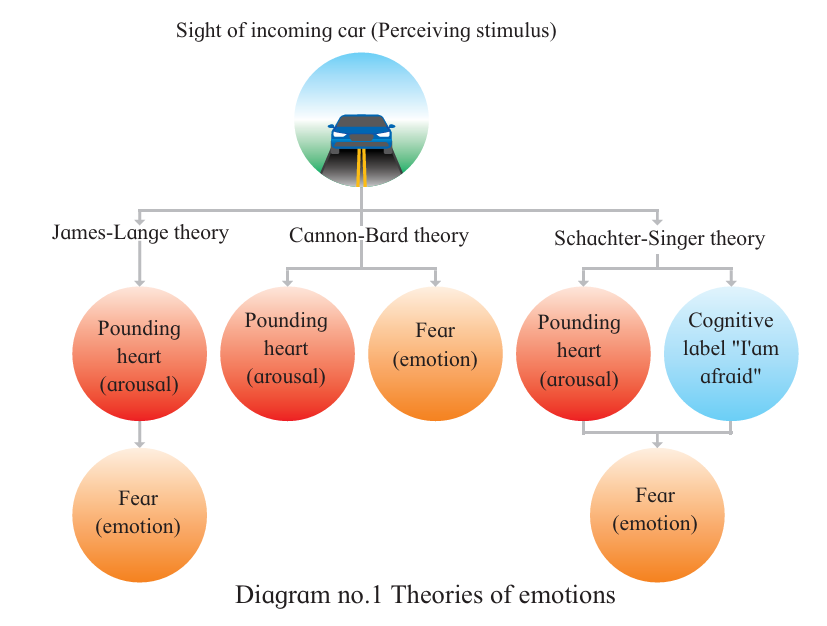
According to facial feedback hypothesis, our facial expressions provide feedback to our brain concerning our emotions. In other words, facial expressions are not only the results of our emotions but are also capable of influencing our emotions. So smiling more frequently over a period of time can in fact, make you happier.
Basic Emotions
Two primary emotions- happiness and sadness.
Identification of Emotions- by Paul Ekman
Happiness
Happiness is the most positive emotion which we all experience and it’s also associated with satisfaction, contentment and joy. It is closely associated with our psychological well being, health and longevity.
Sadness
Sadness is characterized by some other related feelings like disappointment, grief and hopelessness.
Anger
Anger is a very powerful emotion which includes hostility, agitation and frustration. Anger is often displayed through- facial expressions, body language, tone of voice and aggressive behavior. Anger is a two sided sword which can be good as well bad.
Fear
Fear is a powerful emotion which is closely related to our survival from the evolutionary point of view. Fear is also associated with fight or flight response because fear could indicate a threat.
Surprise
Surprise is associated with a physiological state of response after some unexpected event.
Disgust
Evolutionarily disgust evolved as a reaction to foods that might be harmful or fatal. So generally disgust is more common reaction given to the taste or smell that has gone bad. But some other unwanted situations may also give rise to disgust.
Plutchik’s Model
According to Plutchik, emotions have evolved over a period of time for increasing our chance of survival. In his model he stated that there are eight basic emotions : joy, trust, fear,surprise, sadness, anticipation, anger and disgust. Each primary emotion also has its polar opposite.
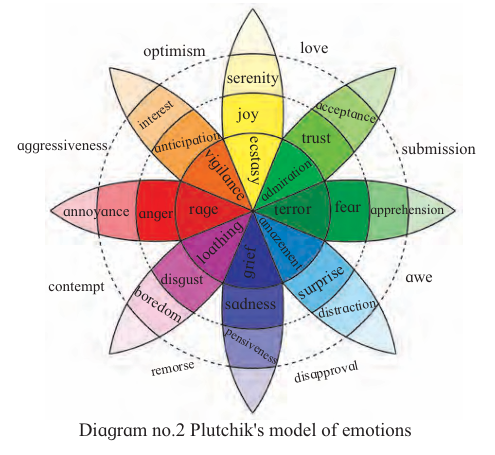
Plutchik created the wheel of emotions which depicts the various relationships among the emotions.
The intensity of emotion decreases as we move outward and increases as we move towards the center.
The color indicates the intensity. The darker the shade, the more intense the emotion. Eg. Anger when its least intense,it is called annoyance and when it reaches at its highest level of intensity, it becomes rage.
Emotions with no color depicts combination of two primary emotions. Eg. Joy and trust combine to be love.
Plutchik states that emotions are often complex and we experience complex emotions most of the time.
Physiological Changes during Emotions
Emotion is derived from the Latin word ‘Emovere which means to stir up or move.
According to David G ‘Human emotion involves physiological arousal, expressive behaviour and a conscious experience’.
The correlation is depicted in the figure given below.
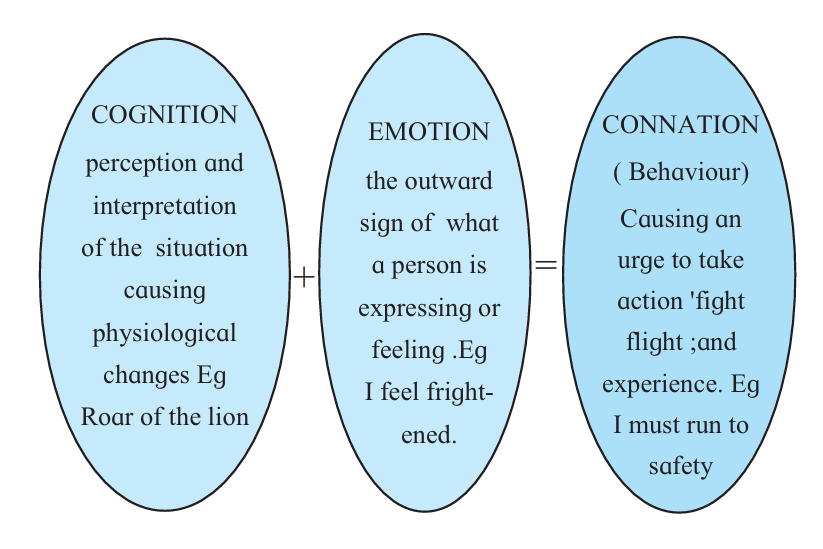
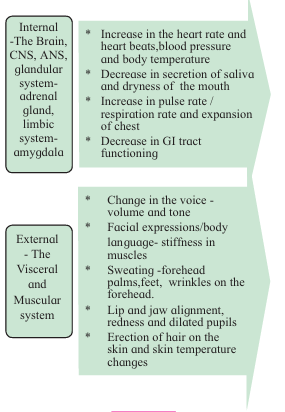
The brain at the Cognitive level perceived the stimulus as dangerous, based on the knowledge that this animal is poisonous and a threat to life. This arouses physiological changes in the form of dilated pupil, faster heart beats, increased pulse rate, sweating, screaming or yelling or crying.
At the Emotional level you experience fear. The Autonomic nervous system and Glandular system signalled the pituitary gland which activated the adrenal gland to secrete the cortisol hormone that triggers either a fight or a flight
The Connation level action plan ( running away, calling for help or rushing to get an object to capture the animal).
Emotional Wellbeing
Emotional well-being means managing our emotions, both positive and negative ones, so that we can lead a healthy and productive life.
Thus understanding and managing one’s emotions, encouraging positive emotions and not getting overwhelmed by the situation negative emotions is also an aspect of emotional well-being.
How do we achieve emotional well- being?



Benefits of Emotional Well Being
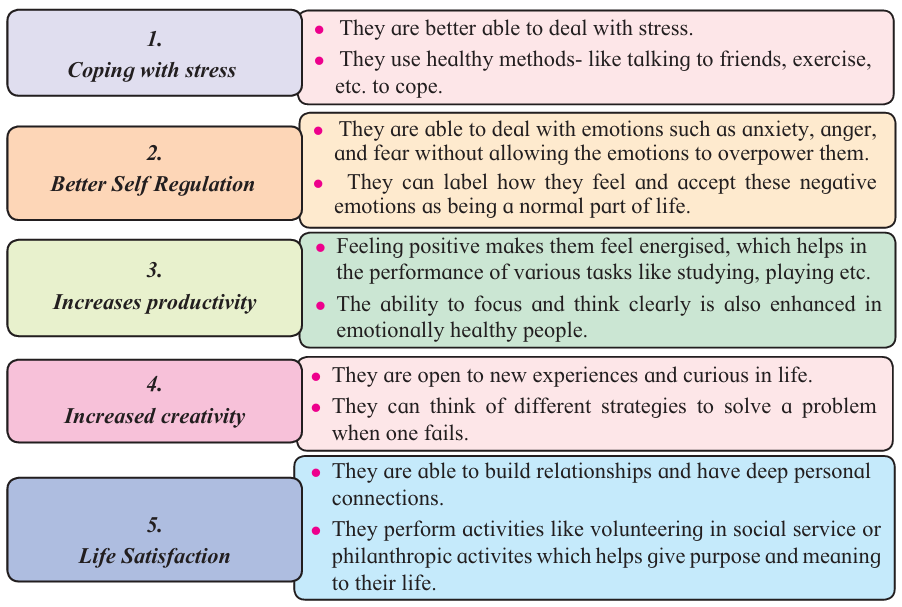
Emotional Abuse
Emotional abuse is more harmful and damaging to the self esteem and self- worth of a person. It can leave the person feeling depressed, anxious and even suicidal.
The scars of emotional abuse are much severe and consuming and take more time to heal than physical abuse.
The excessive and callous use of the harmful behaviour depict lack of control and intentional hurt leading to emotional abuse.
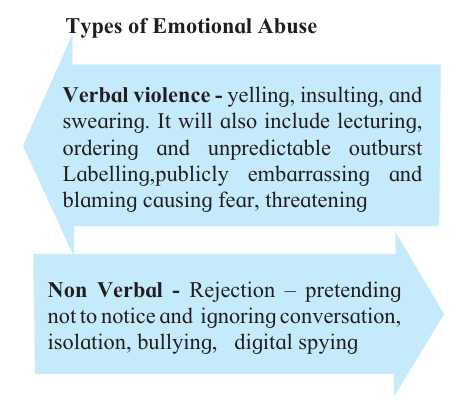
Managing Emotions
Managing Emotions can be defined as ‘The ability to be open to feelings and modulate them in oneself and others so as to promote personal understanding and growth’.
The limbic system, the emotional section is the oldest part of the brain. It developed before the prefrontal cortex which is ‘The Thinking part’, hence making it the extremely strong part of the brain. This is the reason why many a times our emotions hijack our thinking.
Emotional Intelligence involves the ability to understand and manage one's emotions. It is linked to everything from academic achievement to major decision making skills in life.
Anger Management
Anger is a very common way of releasing a negative feeling arising towards a person or a situation , event or thing.
Triggers of anger
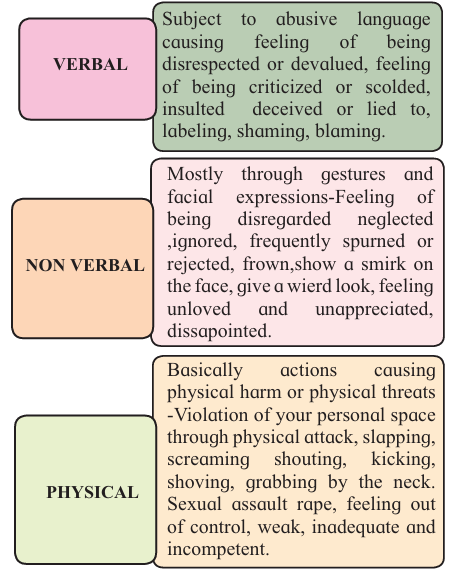
Effective Anger Management begins with you. Controlling anger involves two perspectives:
a. Managing your own anger
b. Learning how to respond effectively to the anger in others.
The 3 R’s : Relax, Reassess and Respond
1. Relaxation and Connection with the inner self
Reassess
-Take complete responsibility for your emotion
-Developing empathy
-Using compassion
-Conduct a reality check
Respond
-Consult
-Engage talks with the other party
- Active listening
-Speak assertively
-Cage your rage